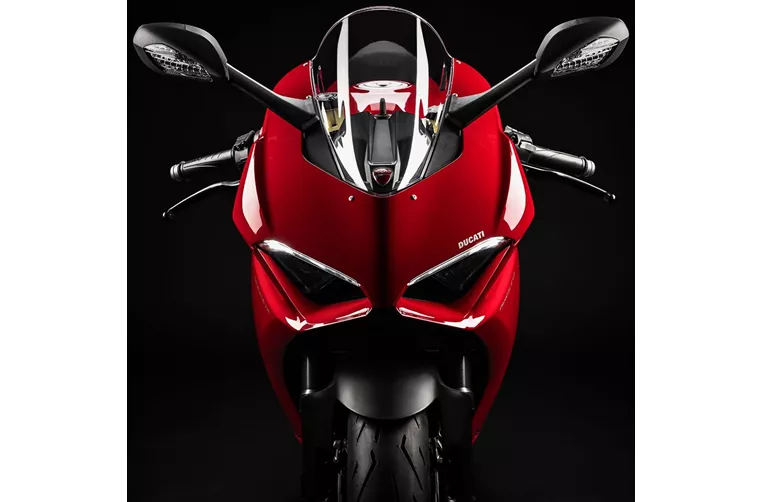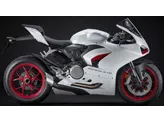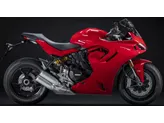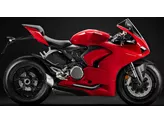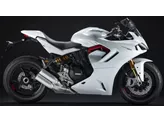Ducati Panigale V2 2020 vs. Yamaha R1 2015
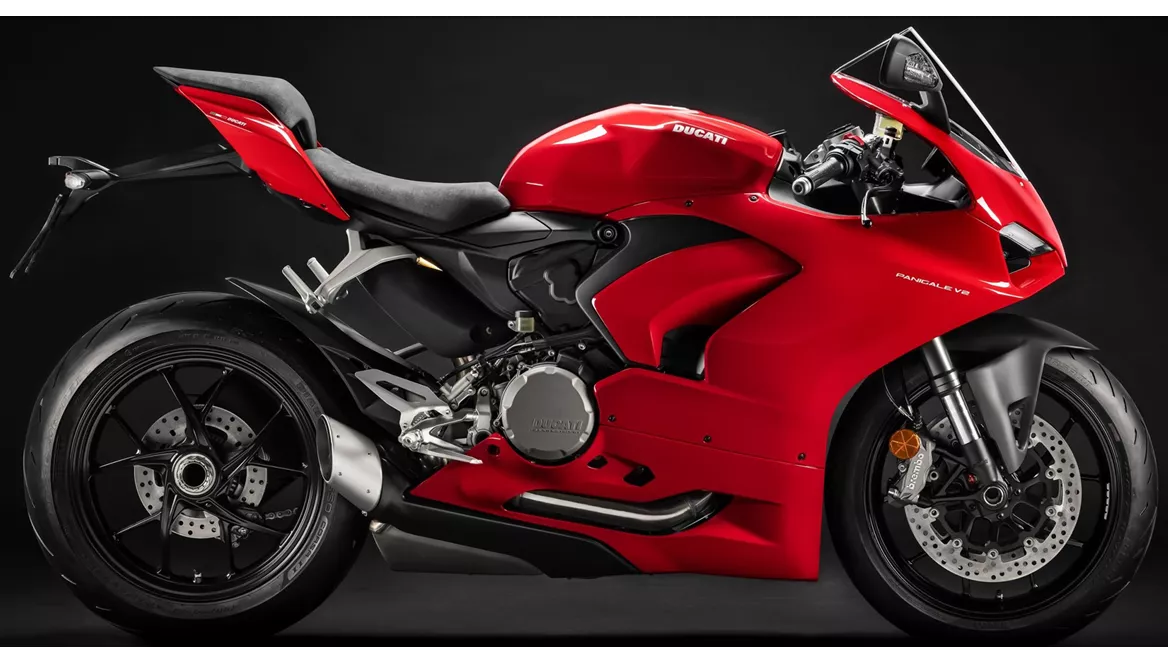
Ducati Panigale V2 2020

Yamaha R1 2015
Overview - Ducati Panigale V2 2020 vs Yamaha R1 2015
The Ducati Panigale V2 2020 and the Yamaha R1 2015 are both powerful and high-performance supersport motorcycles. However, they have some key differences in terms of their technical specifications and strengths.
Starting with the Ducati Panigale V2 2020, it features a 955cc engine with a bore of 100mm and a stroke of 60.8mm. It produces 155 horsepower and 104 Nm of torque, with a compression ratio of 12.5. The V2 engine has two cylinders and four valves per cylinder, utilizing Desmodromic valve technology. The bike is equipped with an advanced rider assistance system, including riding modes, cornering ABS, ride by wire, quickshifter, traction control, and anti-wheelie. The front suspension consists of an upside-down telescopic fork, and the frame is made of aluminum. It has double disk brakes at the front and a monocoque frame type. The front tire has a width of 120mm and a diameter of 17 inches, while the rear tire has a width of 180mm and a diameter of 17 inches. The wheelbase is 1436mm, and the seat height is 840mm. The bike weighs 200kg (with ABS) and has a fuel tank capacity of 17 liters.
On the other hand, the Yamaha R1 2015 is equipped with a 998cc engine with a bore of 79mm and a stroke of 50.9mm. It produces a higher power output of 200 horsepower and 112.4 Nm of torque, with a compression ratio of 13. The R1 engine has four cylinders and four valves per cylinder, utilizing DOHC valve technology. The bike features launch control and traction control as part of its advanced rider assistance system. It has an upside-down telescopic fork front suspension and an aluminum frame with a Deltabox frame type. The front tire has a width of 120mm and a diameter of 17 inches, while the rear tire has a width of 190mm and a diameter of 17 inches. The wheelbase is 1405mm, and the seat height is 855mm. The bike weighs slightly less than the Panigale V2, at 199kg (with ABS), and has a fuel tank capacity of 17 liters.

Ducati Panigale V2 2020
In terms of strengths, the Ducati Panigale V2 2020 stands out with its beautiful and noble design, which is sure to turn heads. It also boasts an outstanding electronics package that provides a high level of safety and enjoyment while riding. The combination of the engine, ergonomics, and electronics makes the bike incredibly "experienceable," offering a thrilling ride. It is considered a great choice for supersport beginners and those returning to the sport. Additionally, the Panigale V2 strikes a balance between engine power, chassis, and ergonomics, making it a well-rounded option.
On the other hand, the Yamaha R1 2015 is praised for its crazy sound and a rev-happy engine that delivers strong peak performance. It offers a great racing feeling in the saddle and comes with a superior electronics package. The bike is also known for its high-quality workmanship, ensuring durability and reliability.

Yamaha R1 2015
However, the Ducati Panigale V2 2020 does have a few weaknesses. Some riders may feel that it could use a bit more horsepower compared to other engines of similar size. Additionally, its true potential is only fully realized in Race mode.
Similarly, the Yamaha R1 2015 has its weaknesses. It experiences torque sag in the middle, which may impact its performance. Additionally, some riders have noted stability issues in the braking zone.
In conclusion, both the Ducati Panigale V2 2020 and the Yamaha R1 2015 are impressive supersport motorcycles with their own unique strengths and weaknesses. The Panigale V2 offers a beautiful design, advanced electronics, and a well-balanced performance, while the R1 delivers a thrilling racing experience, excellent sound, and superior build quality. Ultimately, the choice between the two will depend on the rider's preferences and priorities.
Technical Specifications Ducati Panigale V2 2020 compared to Yamaha R1 2015
Pros and Cons in comparison
Pros and Cons in comparison
Ducati Panigale V2 2020
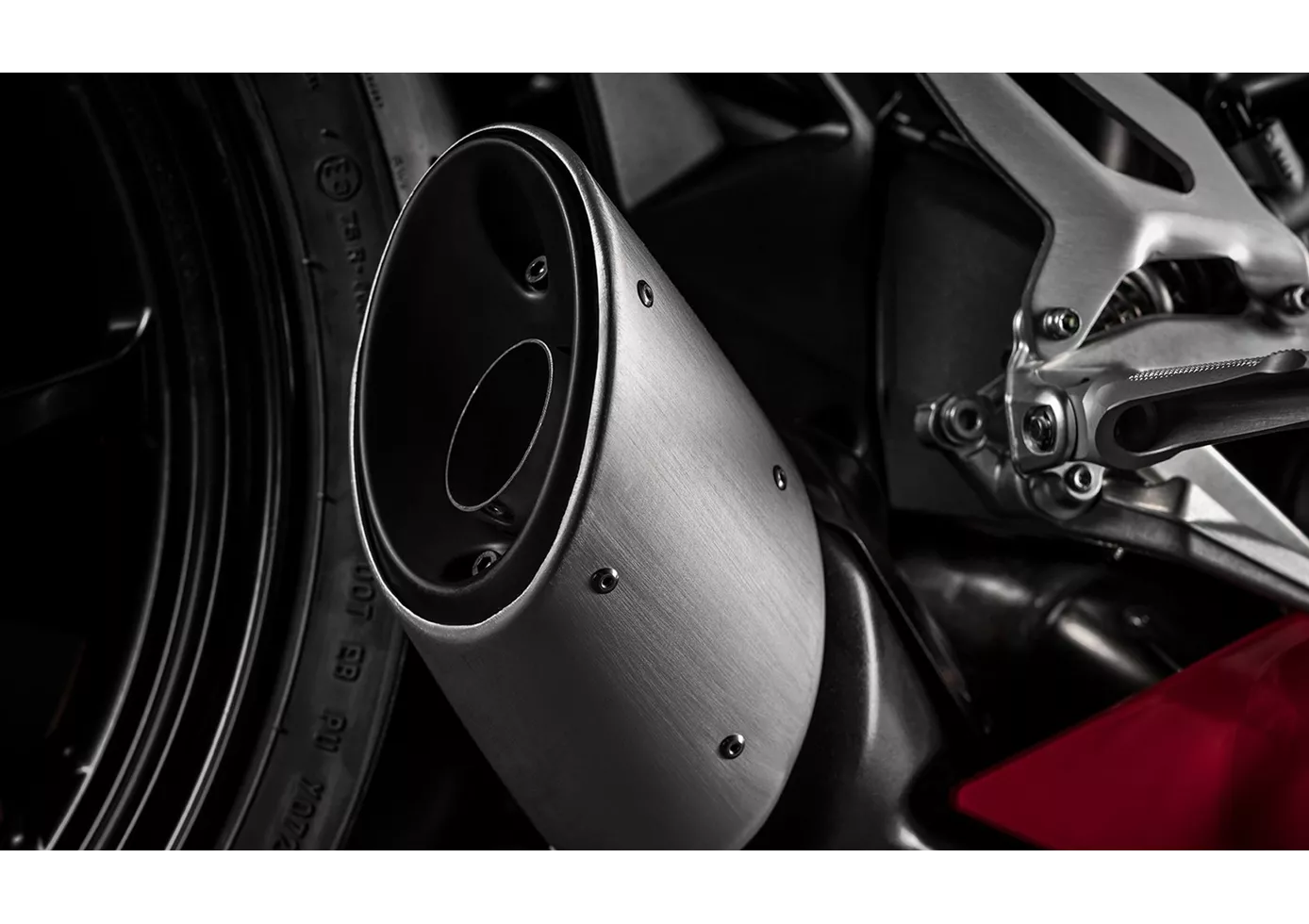
For us, the Panigale V2 is the ultimate road super sports bike. Sophisticated electronic assistance systems that leave nothing to be desired, Ducati's fun 955 cm³ two-cylinder Superquadro engine that generates more than enough power for the road with 155 hp, a great seating position and a high degree of controllability. All of this characterises the Panigale V2 and for this reason it is probably "the" country road supersports bike for us at the moment, but it also cuts a good figure on the racetrack. The Panigale V2 should appeal above all to pilots for whom 200 hp rockets are a bit too much, and to all those who have also been enchanted by this work of art on two wheels.
Yamaha R1 2015

The new R1 is a big hit and no longer compares to the previous model. This was considered a good country road bike and heavy investments had to be made for excursions to the race track. Now it is the other way round. The new R1 has been developed with a clear focus on the race track. The electronics package seems outstanding, technology freaks will get their money's worth. Yamaha fans have to buy it, they finally have a worthy motorbike. The R1 has slight weaknesses when braking - it becomes a little unstable here. If you want to buy a ready-made racing bike without having to work on the chassis, you'd better go for the R1M. The Öhlins electronic suspension works perfectly and has no weaknesses. For pure racetrack use, the second weakness of the R1 can easily be ironed out. The torque hole in the middle can be easily ironed out with a new mapping.
Price Comparison Avarage Market Price Ducati Panigale V2 vs Yamaha R1
There are a few key differences between a Ducati Panigale V2 2020 and a Yamaha R1 2015. There are the same number of bikes of both models available on the 1000PS.de marketplace, specifically 5. It takes less time to sell a Yamaha R1 with 76 days compared to 84 days for the Ducati Panigale V2. Since model year 2020 1000PS.de editors have written 9 reviews for the Ducati Panigale V2 and 80 reviews for the Yamaha R1 since model year 2005. The first review for the Ducati Panigale V2 was published on 23/10/2019 and now has more than 70,000 views. This compares to more than 3,900 views for the first review on Yamaha R1 published on 28/04/2003.






